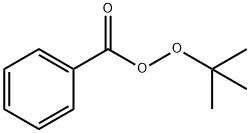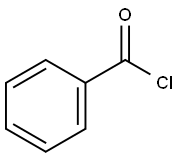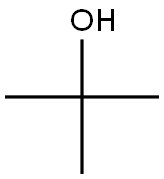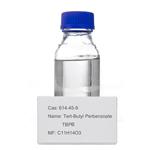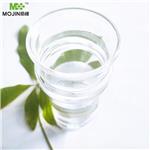Description
Tert-Butyl peroxybenzoate (TBPB) is an organic compound with the formula C6H5CO3CMe3 (Me = CH3). TBPB, a pale yellow, is exclusively encountered as a solution in solvents such as ethanol or phthalate. It is an ester of peroxybenzoic acid and the most widely produced perester.
Chemical Properties
colourless or slightly yellow liquid. At 124 ℃ (temperature), the half-life of tert-butyl peroxybenzoate is 10 hours.
Uses
Tert-Butyl peroxybenzoate is used for elevated temperature curing of polyesters and to initiate polymerization reactions. It could used as a Polymerization initiator for polyethylene, polystyrene, polyacrylates, and polyesters. It is also used as a chemical intermediate.
Uses
tert-Butyl peroxybenzoate was employed as polymerization and cross-linking catalyst. It was also was employed as initiator during ?grafting of 2,2,6,6-tetramethyl-1-piperidinyloxy (TEMPO)-4-oxyacetamido-(3 propyltriethoxysilane) to poly(ethylene co-octene and in preparation of conformal poly(cyclohexyl methacrylate) thin films via initiated chemical vapor deposition.
Synthesis Reference(s)
Journal of the American Chemical Society, 68, p. 642, 1946
DOI: 10.1021/ja01208a033
General Description
Clear, colorless to slightly yellow liquid with a mild, aromatic odor. tert-Butyl peroxybenzoate also is stored and transported as a mixture with inert solids and as a solvent slurry, to mitigate the explosion hazard.
Air & Water Reactions
Insoluble in water.
Reactivity Profile
TERT-BUTYL PEROXYBENZOATE explodes with great violence when rapidly heated to a critical temperature; pure form is shock sensitive and detonable [Bretherick 1979 p. 602]. Upon contact with organic matter, t-butyl peroxybenzoate can ignite or give rise to an explosion [Haz. Chem. Data 1973 p. 77].
Hazard
Oxidizing material; do not store near com-
bustible materials.
Health Hazard
t-Butyl peroxybenzoate is a mild skin andeye irritant. Exposure to 500 mg/day causedmild irritation in rabbit eyes and skin. Toxicitydata on animals show a low order oftoxicity.
LD
50 value, oral (mice): 914 mg/kg
It has been reported to cause tumors(blood) in mice. Its carcinogenic actions onhumans are unknown.
Fire Hazard
Highly reactive and oxidizing compound
with moderate flammability; flash point (open
cup) 107–110°C (224.6–230°F); autoignition
temperature not reported.
It forms an explosive mixture with air; the
explosive range not reported. It is not sensitive
to shock but is heat sensitive. It explodes
on heating; self-accelerating decomposition
temperature 60°C (140°F).
It may react explosively when mixed with
readily oxidizable, organic, and flammable
substances. Fire-extinguishing agent: water
from a sprinkler; use water to keep the
containers cool.
Flammability and Explosibility
Flammable
Safety Profile
Moderately toxic by
ingestion. A skin and eye irritant.
Questionable carcinogen with experimental
tumorigenic data. Mutation data reported.
See also PEROXIDES, ORGANIC.
Potentially explosive when heated above
11 5'C. Explosive reaction on contact with
organic matter or copperQ) bromide +
limonene. When heated to decomposition it
emits acrid smoke and fumes.
Carcinogenicity
Other studies have determined
the possibility that t-butyl peroxybenzoate can be metabolized
to free radicals by human carcinoma skin keratinocytes.
Free radicals are suggested to be involved in the cascade of
events occurring during tumor promotion .
storage
It should be stored in a well-ventilatedplace at a temperature between 10 and27°C (50–80°F), isolated from oxidizable,flammable, organic materials and accelerators.It should be shipped in glass, polyethylene,and earthenware containers of up to5-gallon capacity placed inside wooden orfiberboard boxes.
